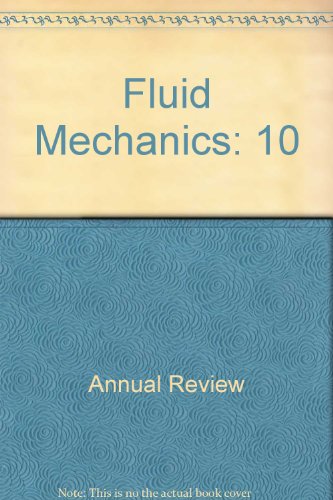Fluid Dynamics of Squirmers and Ciliated Microorganisms
IF 30.2
1区 工程技术
Q1 MECHANICS
引用次数: 0
Abstract
The fluid dynamics of microswimmers has received attention from the fields of microbiology, microrobotics, and active matter. Microorganisms have evolved organelles termed cilia for propulsion through liquids. Each cilium periodically performs effective and recovery strokes, creating a metachronal wave as a whole and developing a propulsive force. One well-established mathematical model of ciliary swimming is the squirmer model, which focuses on surface squirming velocities. This model is also useful when studying active colloids and droplets. The squirmer model has been recently used to investigate the behaviors of microswimmers in complex environments, their collective dynamics, and the characteristics of active fluids. Efforts have also been made to broaden the range of applications beyond the assortment permitted by the squirmer model, which was established to specifically represent ciliary flow and incorporate biological features. The stress swimmer model imposes stresses above the cell body surface that enforce the no-slip condition. The ciliated swimmer model precisely reproduces the behaviors of each cilium that engages in mutual hydrodynamic interactions. Mathematical models have improved our understanding of various microbial phenomena, including cell–cell and cell–wall interactions and energetics. Here, I review recent advances in the hydrodynamics of ciliary swimming and then discuss future challenges.Expected final online publication date for the Annual Review of Fluid Mechanics, Volume 56 is January 2024. Please see http://www.annualreviews.org/page/journal/pubdates for revised estimates.蠕动体和纤毛微生物的流体动力学
微游泳者的流体动力学已受到微生物学、微机器人和活性物质等领域的关注。微生物进化出了一种叫做纤毛的细胞器,用于在液体中推进。每根纤毛周期性地进行有效的和恢复的击打,形成一个整体的超向波,并产生推进力。纤毛游泳的一个公认的数学模型是蠕动模型,它关注的是表面蠕动速度。该模型在研究活性胶体和液滴时也很有用。蠕动模型最近被用于研究微游泳者在复杂环境中的行为、它们的集体动力学和活性流体的特性。人们还努力扩大应用范围,使其超越蠕动模型所允许的分类,蠕动模型是专门为代表纤毛流动而建立的,并结合了生物学特征。应力游泳者模型在细胞体表面上施加应力,以保证不滑移。纤毛游泳者模型精确地再现了每根纤毛参与相互流体动力学相互作用的行为。数学模型提高了我们对各种微生物现象的理解,包括细胞-细胞和细胞壁相互作用和能量学。在这里,我回顾了纤毛游泳的流体动力学的最新进展,然后讨论了未来的挑战。预计流体力学年度评论的最终在线出版日期,第56卷是2024年1月。修订后的估计数请参阅http://www.annualreviews.org/page/journal/pubdates。
本文章由计算机程序翻译,如有差异,请以英文原文为准。
求助全文
约1分钟内获得全文
求助全文
来源期刊
CiteScore
54.00
自引率
0.40%
发文量
43
期刊介绍:
The Annual Review of Fluid Mechanics is a longstanding publication dating back to 1969 that explores noteworthy advancements in the field of fluid mechanics. Its comprehensive coverage includes various topics such as the historical and foundational aspects of fluid mechanics, non-newtonian fluids and rheology, both incompressible and compressible fluids, plasma flow, flow stability, multi-phase flows, heat and species transport, fluid flow control, combustion, turbulence, shock waves, and explosions.
Recently, an important development has occurred for this journal. It has transitioned from a gated access model to an open access platform through Annual Reviews' innovative Subscribe to Open program. Consequently, all articles published in the current volume are now freely accessible to the public under a Creative Commons Attribution (CC BY) license.
This new approach not only ensures broader dissemination of research in fluid mechanics but also fosters a more inclusive and collaborative scientific community.

 求助内容:
求助内容: 应助结果提醒方式:
应助结果提醒方式:


